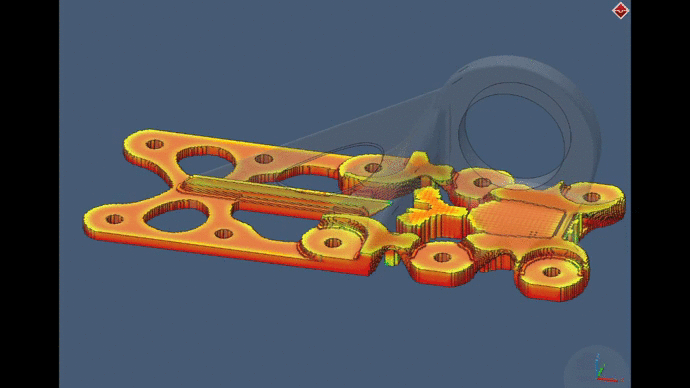The use of FEA to design ‘optimal’ components has been around for nearly two decades. In general terms it works by meshing an available volume for a part and then eating away at the space iteratively to leave just those bits of the mesh that are doing work while aiming at a target mass for the part, as in the examples below.


Using this method ‘raw’ it is easy to see how un-manufacturable designs can result, so much effort has been invested by software developers to place manufacturing constraints on the optimisation process to, for example, eliminate voids or undercuts in moulded parts.
These constraints can limit the solution dramatically and/or increase the solution time considerably. As a rule, the more an optimisation is constrained the less likely it is to come out with a clear design.
The adoption in the last couple of years of 3D printing technology, particularly of metals, has given this technique a new lease of life. 3D printing works by printing parts layer by layer from above and as such does not have shape constraints in the same way as forging, casting, machining and moulding does.

A combination of Topology Optimisation with 3D printing can help reduce the weight of parts to achieve the aggressive targets set by Automotive and Aerospace OEMs.
MSC Nastran is a standard FEA solver in both those industries. It has been solving optimisation problems for many years and does have the ability to apply shape constraints to a topological optimisation as well as combining topology with other types of optimisation based on things like wall thickness, beam cross-section etc, all in one solution.
This is further enhanced by a multi-model capability wherein a component can be optimised based on its use within several system variants. An example of this would be the design of a floorpan of a car platform that was used for a coupe, cabriolet, estate and SUV. All result in different load conditions due to the different monocoque architectures but need to share a common part.
MSC Nastran is not as expensive as you would imagine. The capability is part of MSC Software’s MSC One token licensing system which for SME companies can mean access to this technology for not much more than your Sales Manager’s company car lease.
Read more posts on FEA and Analysis >>
.png?width=139&height=70&name=DTE-Logo%20(4).png)

